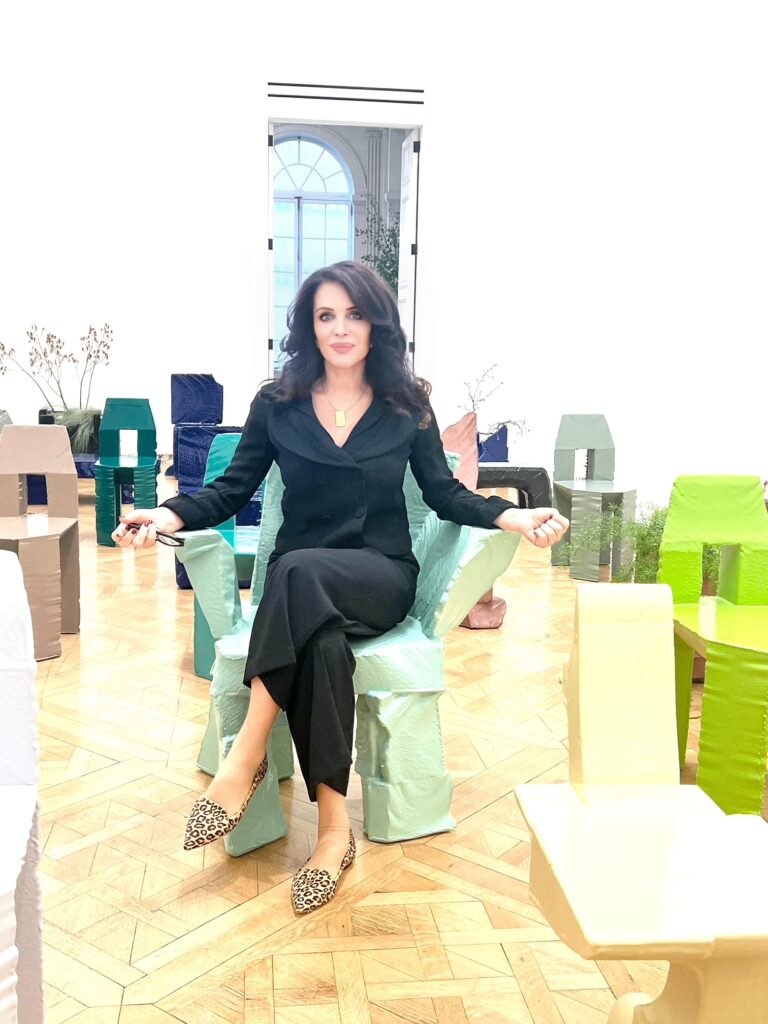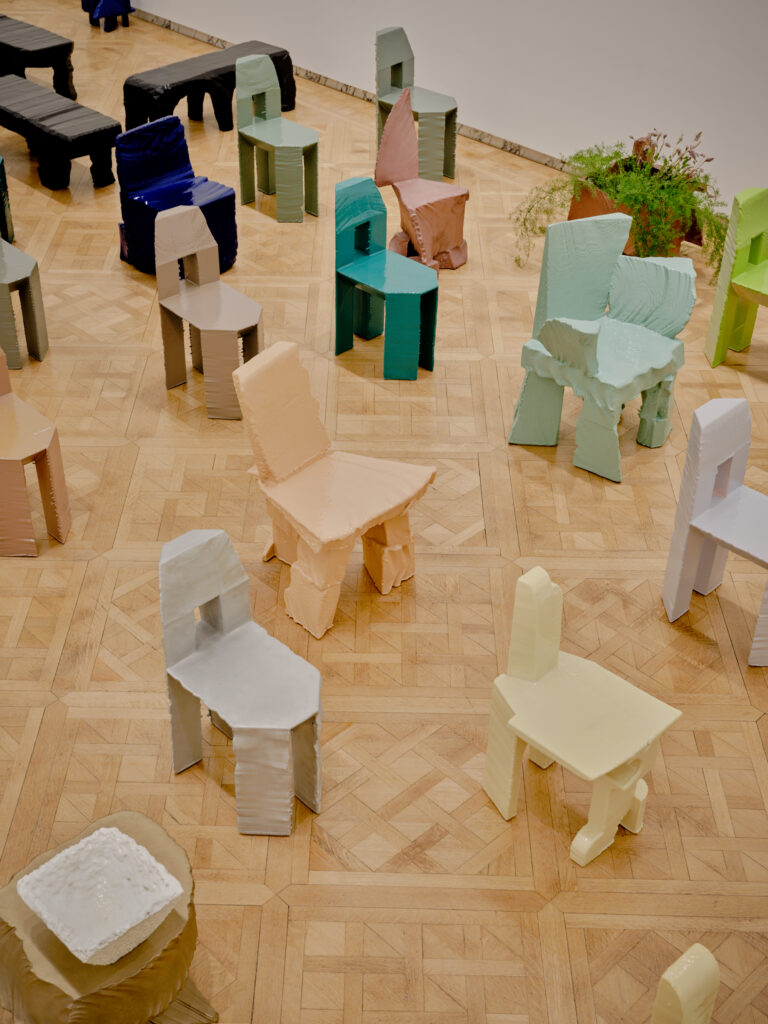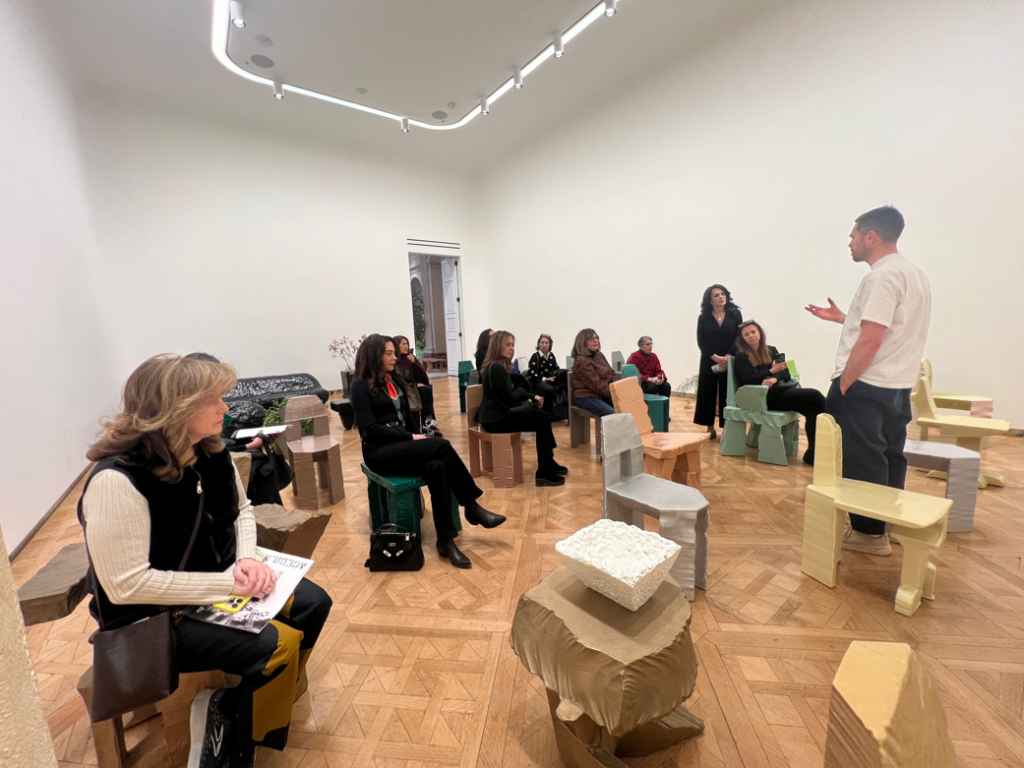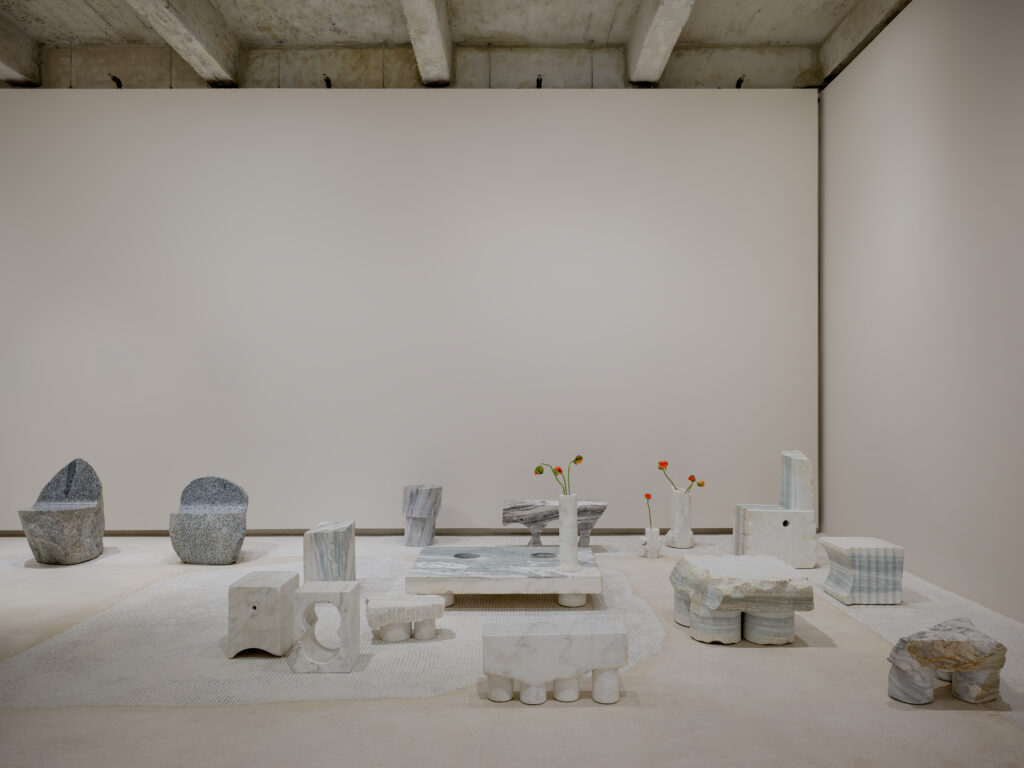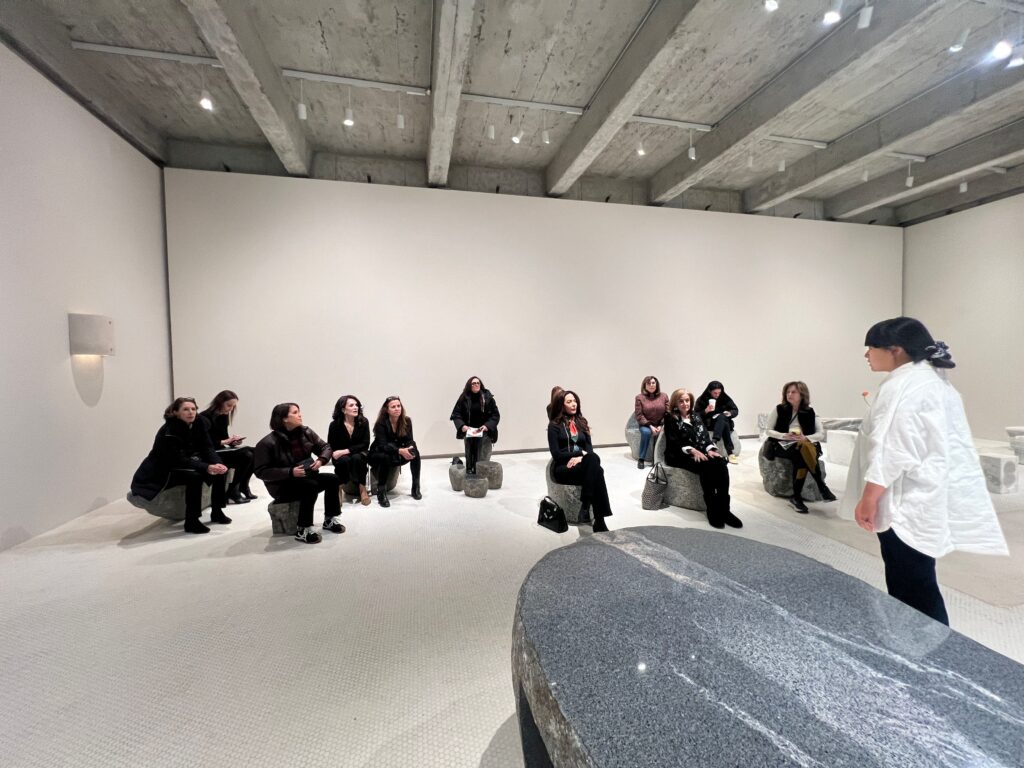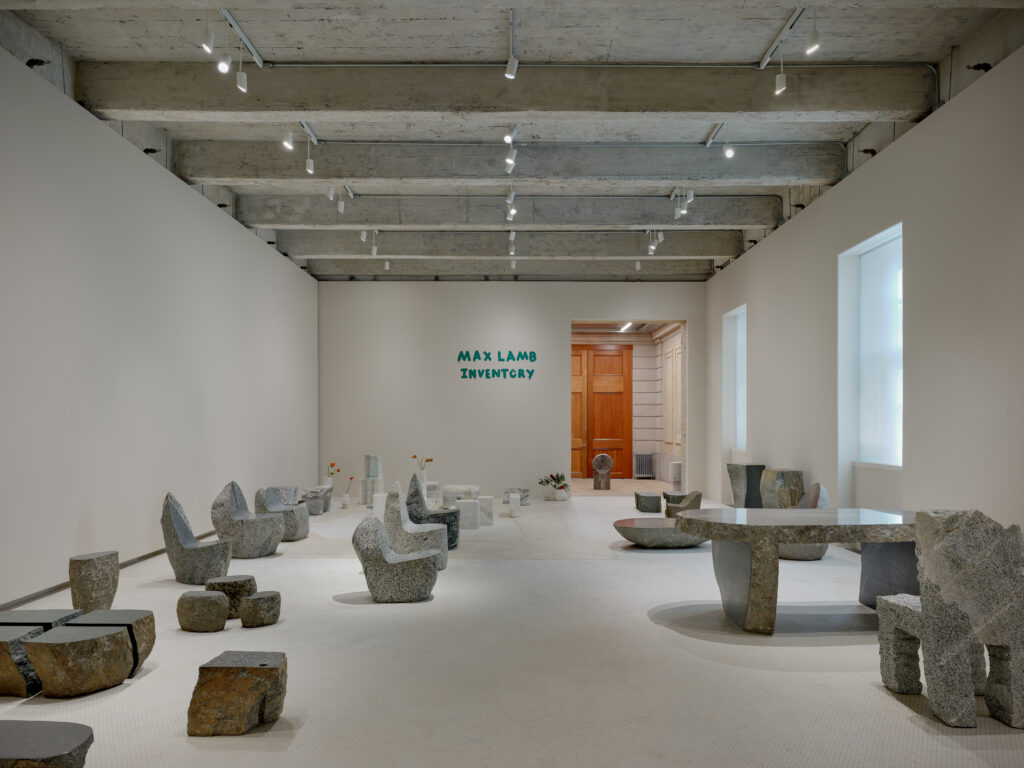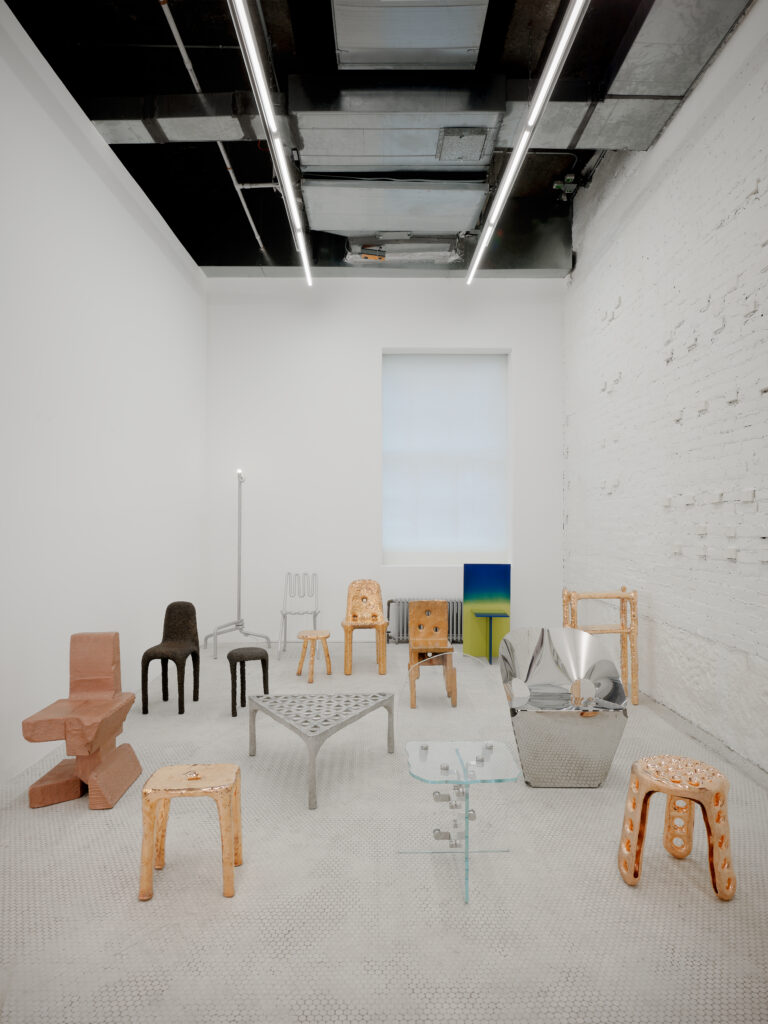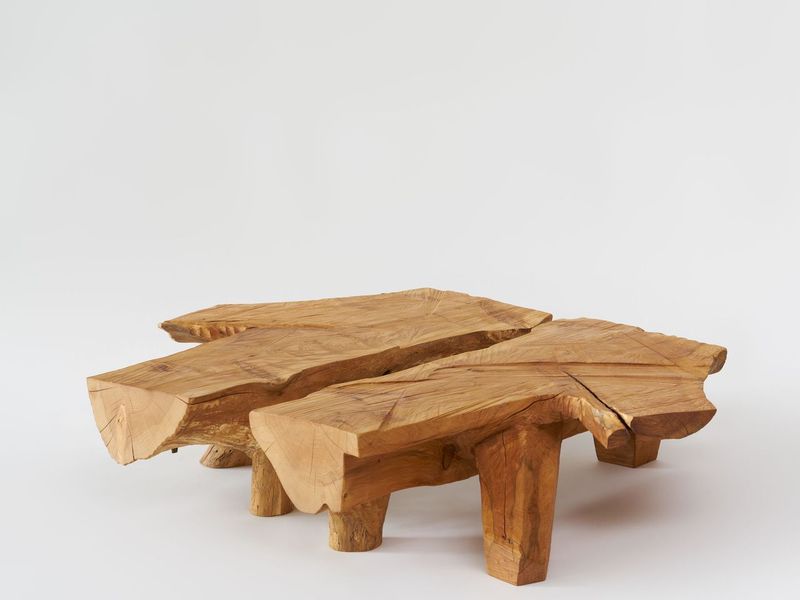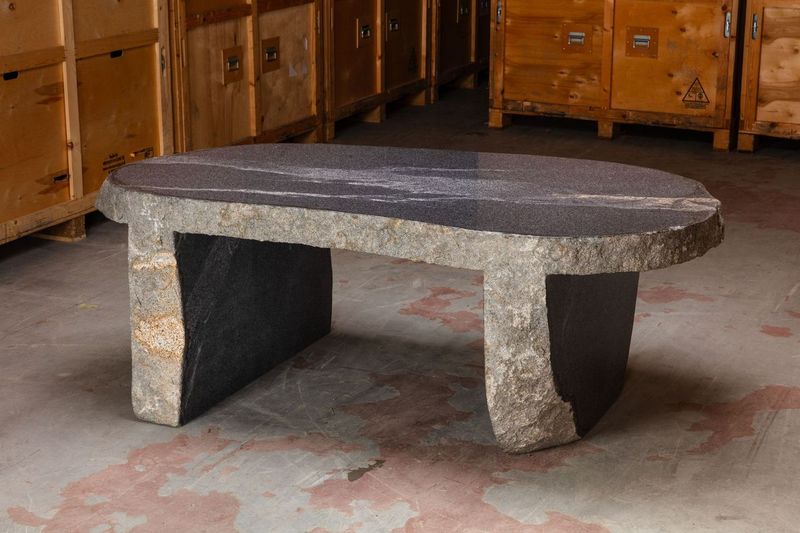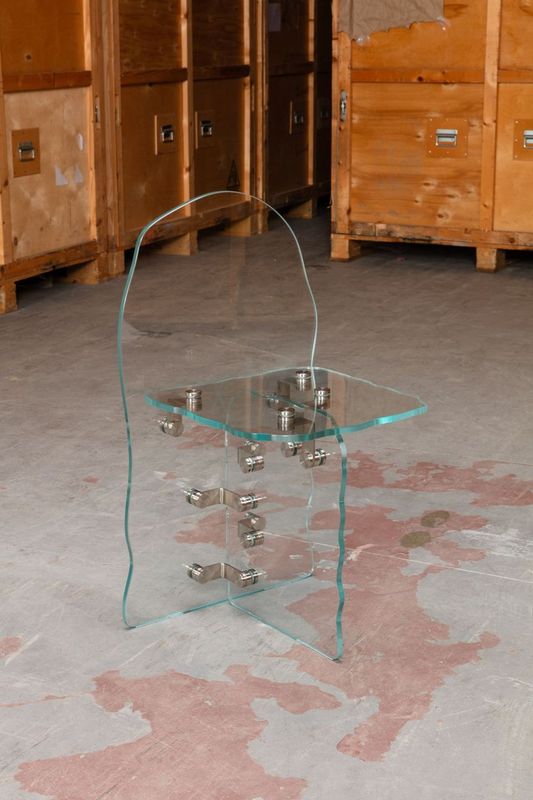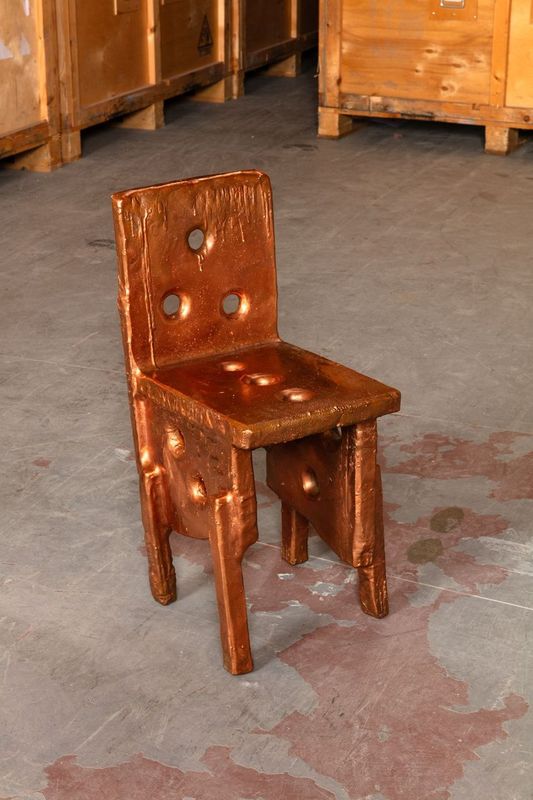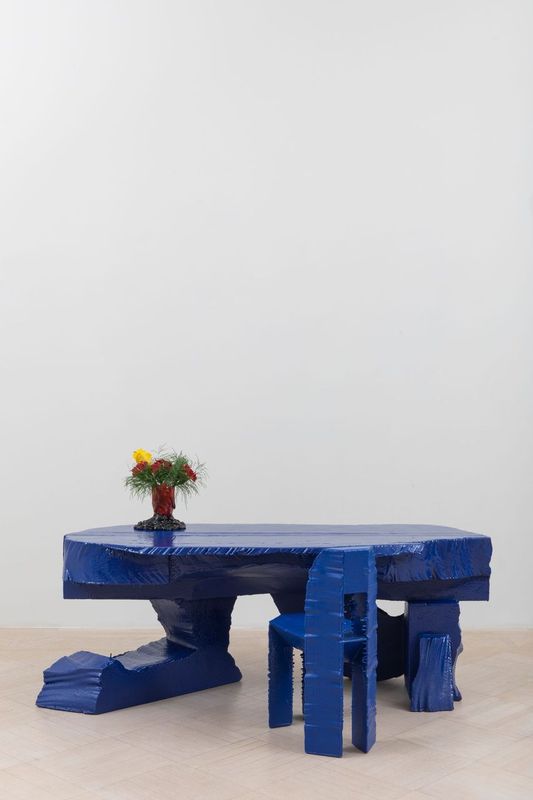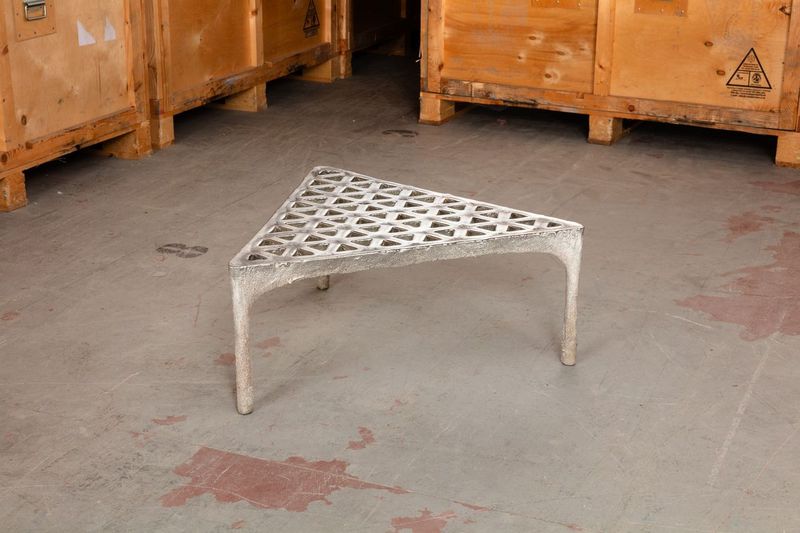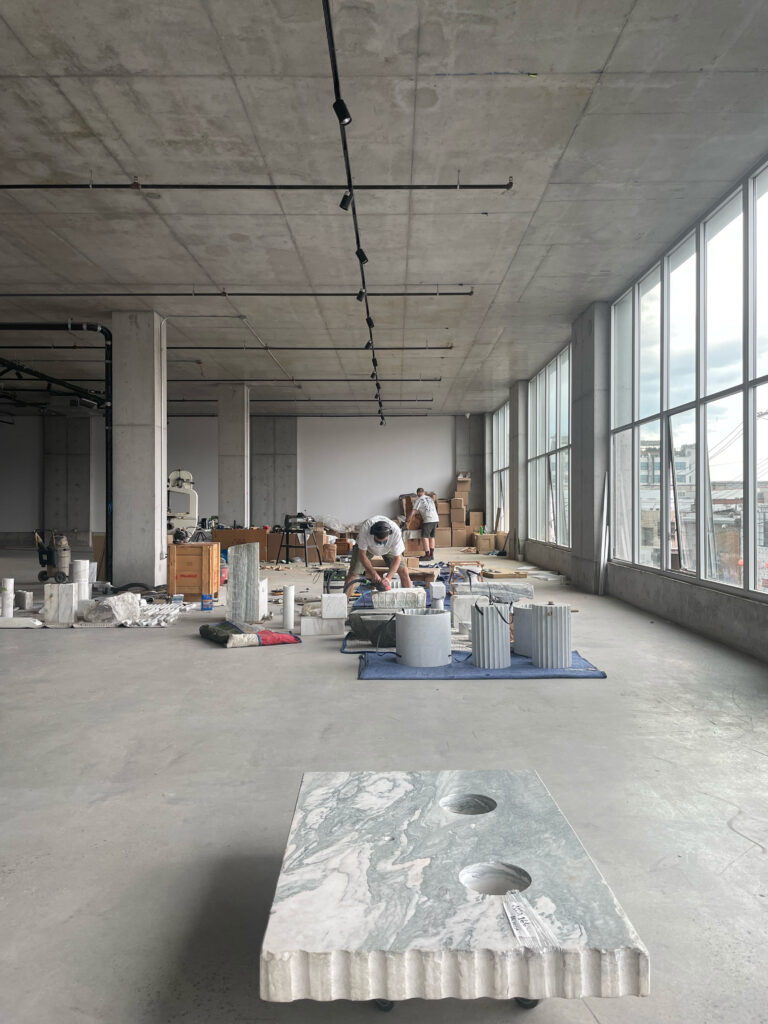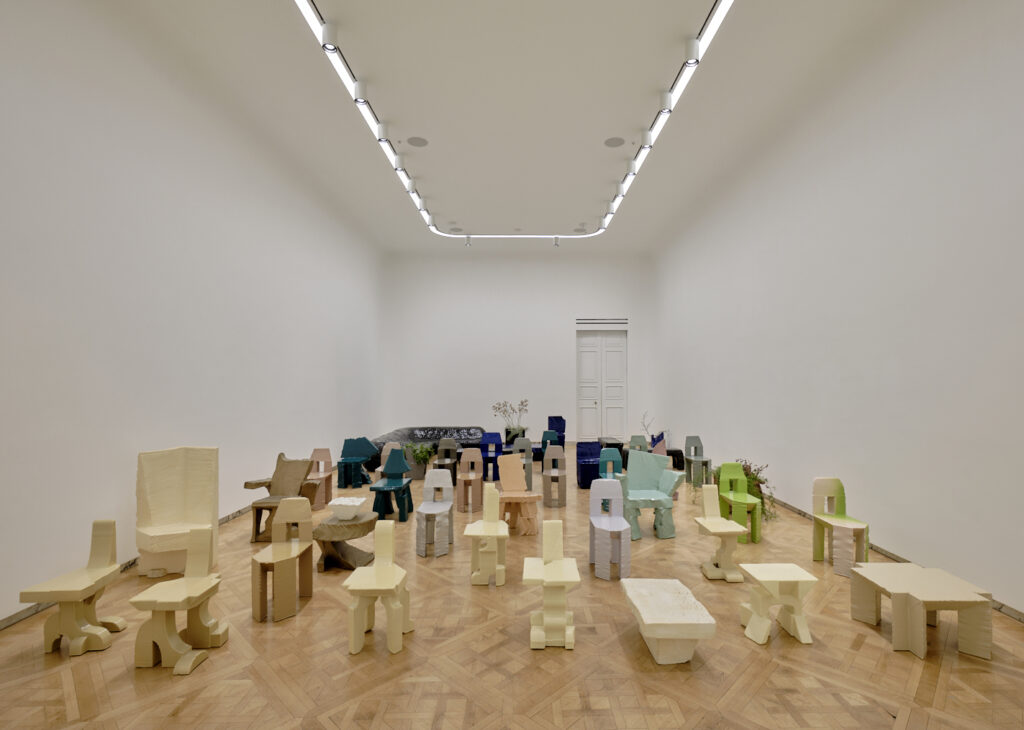
The exhibition Max Lamb: Inventory, which opened at Salon 94 this last week, is a career survey and showcase of the eponymous British designer’s own inventory, as the title suggests. This ambitious and stunning presentation is a pleasure to look at and fascinating to learn about. Having been in the making for nearly four years, Lamb was able to draw from his pieces that were stored in warehouses, galleries, and other spaces into completely new pieces and bring them together into one space. The space is a landmark building, designed by famed New York architect Ogden Codman Jr. and completed in 1915 in his signature Beaux-Arts style. It has been home to the National Academy of Design since the 50s, and for the past three years has also housed Salon94.
Spending a morning with Lamb (b. 1980) during his most comprehensive survey to date revealed his vision, passion, and ambition to carve his own path. I understood his processes as a maker, his curiosity and interest in materials, handcraftsmanship, and techniques. The stories behind the various stages of his career as told by the charismatic and articulated designer himself illuminated this powerful installation and the occasionally enigmatic objects that inhabit it. Lamb took me on a journey around the world—everywhere he has traveled to create his furniture, from China to Japan, to California, to South of England where the maker-designer has traveled to craft his objects in the local traditions.
It was clear when he graduated from the Royal College of Art in 2006 that the world of design was going in new directions. During the early years of the new millennium, it became apparent that the most important and innovative manifestations in design culture came to embody storytelling, the handmade, and personal expressions. In this landscape, Lamb with his passion for materials, research, and experimentation, was swiftly embraced. From the beginning of his career, his work has been both physical and spiritual. The images of him at work remind me of a Renaissance sculptor or a Japanese craftsperson.
Much of his work is done on site (i.e. quarries, forges, woodlands), assisted by a small crew of craftspeople; but ultimately, it is his mark that is found on every one of his pieces. He went to the beach in Cornwall to cast a stool from molten pewter, to Devon to use the unique rubber spray for coating, to Wajima City, Japan with his clefted wood pieces to coat them with high-gloss—Urushi lacquer—where it was developed back in ancient times, to Northern California to carve wood, and to China to sculp stone. All of these individually crafted pieces when presented together illustrate the whole, revealing the wealth of methods, sculptural forms, and multifaceted materials that came to shape his work.
The ground floor of the gallery is devoted to Lamb’s work in stone, where the pieces are arranged in a beautiful composition of marble, bluestone, and granite; colorless and sensual. On the second floor there is an enormous installation of Lamb’s Poly furniture series, colorful pieces carved by hand from blocks of foam and coated with a polyurethane rubber. Lamb told me about the days in which he would load his truck with pieces of furniture and drive from his home-studio in London to Devon early in the morning to work on spraying the pieces, and then drive back late that night. I particularly loved the pieces in clay and wood which I had never seen before; Lamb worked at an artist residency in the Northern California home and studio of JB Blunk, the famed sculptor who is known for his expressive works in wood. Here, Lamb dug up clay from the site and processed it himself, making a vast series of experiments through which he could test out his passion for pottery.
Lamb’s forms are eccentric, unusual, and contemporary. His work and vision are authentic, making him one of the most intriguing makers working today; this exhibition will certainly cement him as such.
